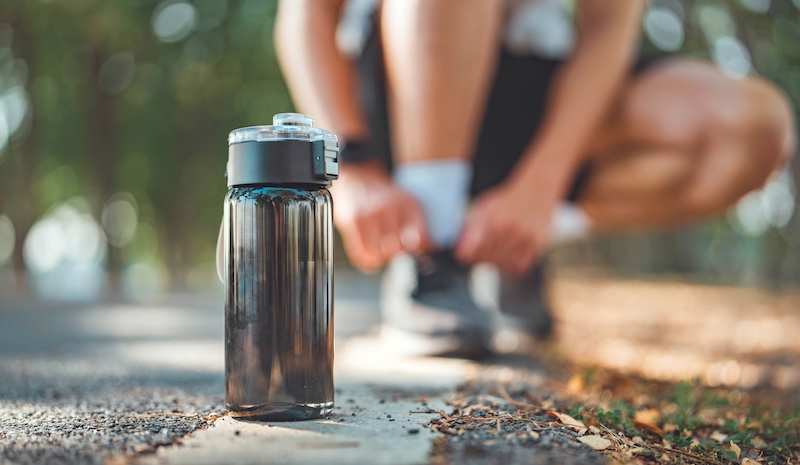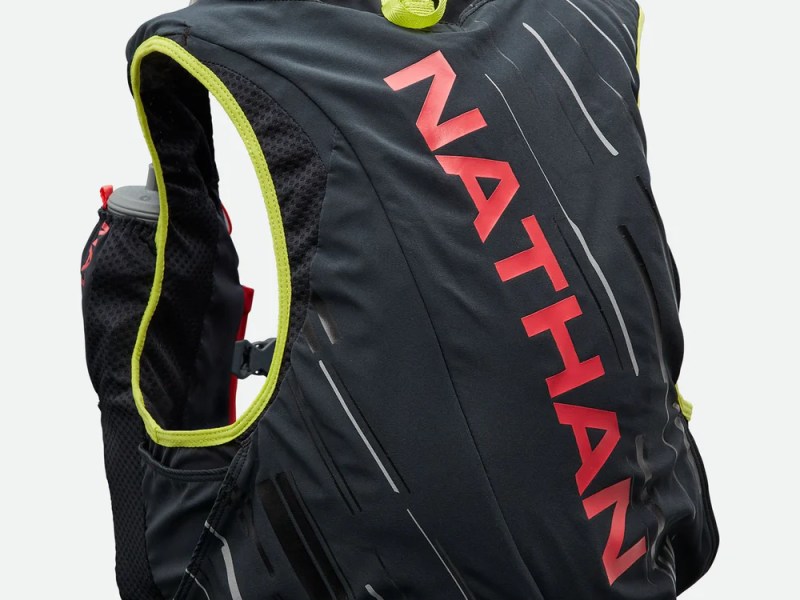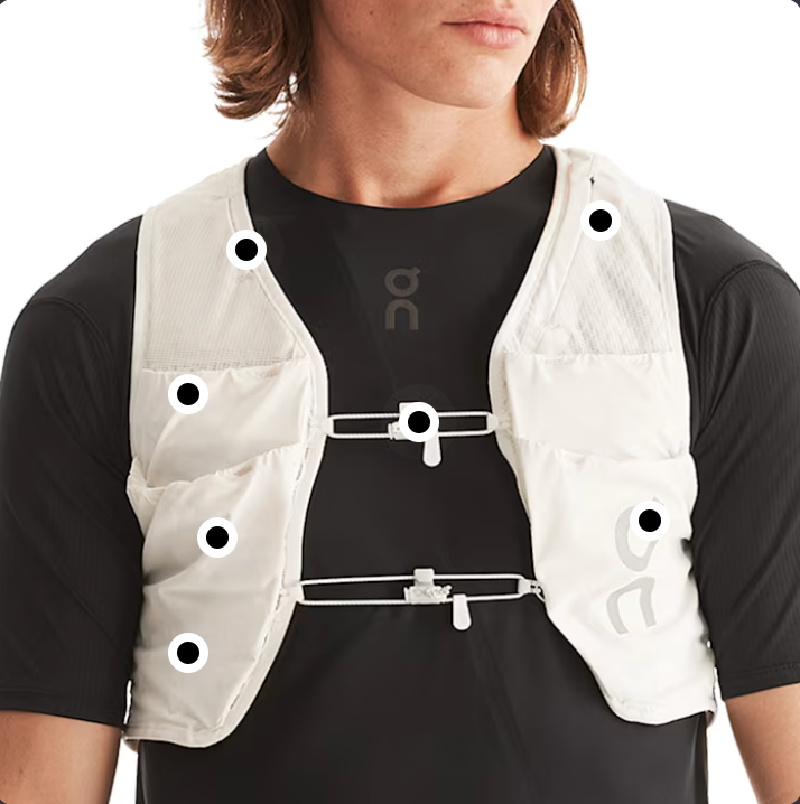Whether you’re just starting out as a runner or you’ve got a few marathons under your belt, staying hydrated during your run is important for optimizing performance. The question becomes how to carry water while running and we’re here to help simplify that for you today!

How Carry Water On Your Run
Researchers, runners, and USA Track and Field all agree that carrying water with you is worth it for many reasons and you must be learning that’s true as you’re now here.
While some people stash water bottles along their route or plan a run that passes by public water fountains at regular intervals, these options require quite a bit of planning and trusting the safety of public water sources.
If your run lasts for more than 45 minutes, you’ll want to drink during the run to prevent dehydration and the negative symptoms associated with it, such as diminished performance, fatigue, and a loss of coordination. But what are the best options that allow you to hydrate as necessary?
Let’s break down the most effective methods to bring water along on your run.
#1 Basic Water Bottles
Carrying a water bottle on your run might be the simplest and most cost-effective way to go. After all, we all have a bunch of them just sitting at home waiting to be used, right?
That may be true, but there are some other things to consider as well.

If you want a full rundown of when and how much water you should be drinking on a run, check out our article here.
Water Bottle Pros & Cons:
- Water bottles designed for running feature a strap, which make them easy to hold
- Lightweight
- Cost-effective
- Challenging to keep water cool on longer runs
- Limited capacity
- The sloshing sound can be distracting
- Leaks are possible
Things to consider:
Some runners believe that carrying more weight on one side of their body can affect their gait, and even lead to issues with their IT band and plantar fascia, but research suggests that this might not be as significant as many think.
Also, even though these are handheld items, some can be stashed in a vest or jacket pocket, or in a fanny pack pouch.
If you want to start out with a water bottle, here are the running water bottles we recommend.
#2 Soft-Sided Flasks
Some companies are making strides when it comes to handheld options, with choices that allow runners to hold bottles that mold to the hand.
Popular options are the Nathan SpeedShot Plus Insulated Handheld Flask and the Amphipod Handheld.
Soft-Sided Flasks Pros & Cons:
- They typically hold more liquid than an average bottle
- The molded shape helps with grip, and the insulation keeps contents colder
- The neoprene cover typically includes a zipper pouch that can hold small items like keys
- Low risk of chafing
- They only hold enough water for runs lasting an hour or less
- Similar sloshing sounds as water bottles
- Difficult to clean
Things to consider:
Since a flask is made to mold to your hand, the risk of dropping or mishandling it is lower than a water bottle.
However, once they’re empty, you’ll need a way to store them or you’ll have to carry them on your whole run.
Sound like a good option for you? These are the handheld bottle options we recommend.
#3 Hydration Belts
The best options for carrying water while you run help you distribute its weight. Hydration belts do that by storing bottles or flexible flasks around your waist.
Some are designed to carry one larger bottle in the middle of your back, while others hold multiple bottles close to your hips.
Hydration Belts Pros & Cons:
- Allows for carrying multiple solutions, like water in one and electrolytes in the other
- Your hands are free to move naturally
- Hold more water needed for longer runs
- Can be fitted to the individual’s body size and type
- Taking the bottles in and out seamlessly requires practice
- If the fit is off, the belts can bounce and/or cause chafing
- Some runners dislike the sound of fluids sloshing/the feeling of water moving
Things to consider:
Almost all belts come with at least one pocket large enough to hold keys, phone, gels, etc.
Another plus is that while some water-carrying options are being banned at large marathons, belts are allowed at more events. However, always make sure to check with your
These running belts won’t slip or bounce, and they hold a ton of stuff, too.
#4 Hydration Vests and Backpacks (Our Top Pick)
There’s never going to be a one-size-fits-all solution for runners out there, but an investment into a hydration vest or backpack is definitely worth it. Trust a team of running coaches who’ve been at this for decades, you WILL find it’s an incredible tool.
Vests offer flexibility, comfort, and storage, while giving you easy access to hydration. Backpacks are also a great option for anybody who wants to carry a large amount of water hands-free.

The best hydration vests and packs combine comfort, functionality, and durability, while fitting your body well enough to stay put.
Hydration Vests and Backpacks Pros & Cons:
- Bladders are made of flexible polyurethane that keeps water cool on long trail days
- Weight is distributed on the center of your back or evenly on either side of your chest
- Straps are adjustable, so it can be worn comfortably with or without layers
- Many include waterproof pouches and/or bottles on both sides of your body
- Multiple flask options means you can pack both water and electrolytes
- Lots of pockets for storage of essential items like keys, phones, wallets, energy gel, etc.
- A higher cost than bottles, flasks or belts
- More contact points means more opportunity for chafing if your fit isn’t just right
- Grabbing and replacing bottles from a vest can be tricky without practice
- Bladders are difficult to clean
Things to consider:
Many vests and backpacks are considered unisex, resulting in a design that can be uncomfortable across the chest for female runners.
However, there are some made specifically for women that feature a shorter torso and hourglass shape, like the Nathan Pinnacle 4L Hydration Vest we feature below.

Our Favorite Hydration Vests
We’ve tested many hydration vests over the years, and the Nathan Pinnacle 4L and the On Running Ultra Vest are our absolute favorites.
The Nathan Pinnacle 4L is particularly nice because it combines the best of both worlds.
It features two pouches in the front that hold 20 ounce flasks with a long hose and mouthpiece. It also comes with a removable bladder for the backpack pocket if you want to fill it up for longer runs.

The On Running Ultra Vest is super lightweight and stylish, so it’s great for race day!
It holds two large, tapered bottles and has a deep back pocket for storage, which makes it an ideal choice for long days on the trail.

Check out our in-depth reviews of the hydration vests we recommend, including some lower cost options we also love.
The Best Ways To Carry Your Phone While Running
Now that we’ve given you some options for carrying water while you run, which of these are best for carrying your phone?
Most water bottles and flasks, even those with sleeves and small pouches, don’t give you a good option for holding a phone. If you go that route, a running armband could be a viable choice.
Hydration belts typically have a larger pocket to accommodate your phone.
Hydration vests can come with both a larger pocket on the back and smaller zippered pockets or kangaroo pouches on the front for your phone.
Hydration backpacks have similar multiple pocket options on the front and back, as well as plenty of room in the back for storing your phone and multiple other items.
If you want more ideas on how to carry your phone while you run, check out some of these articles that offer more options!
The post How Do You Carry Water While Running? Our Top Recommendations As Coaches appeared first on RunToTheFinish.
from RunToTheFinish https://ift.tt/JSKnRqa





